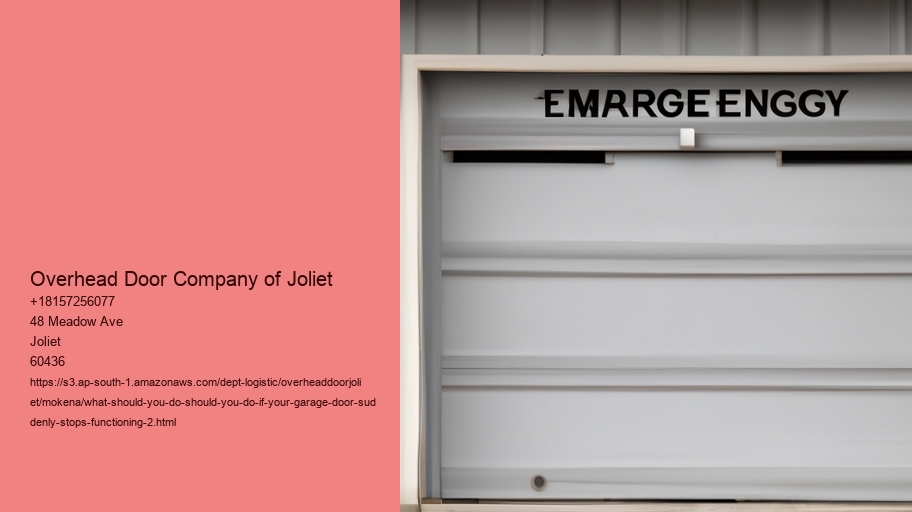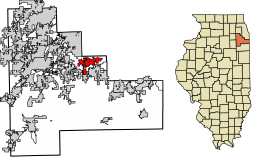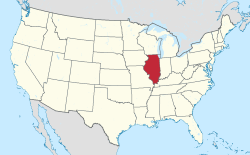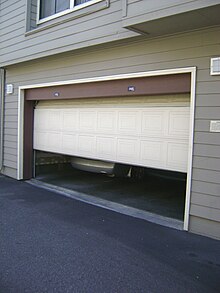What Kind of Garage Door Opener and Door Do You Have? .
It is essential to understand the type of garage door and opener that you have before you begin troubleshooting.
Garage doors generally fall into a few types based on their appearance and operation.The most commonly used kinds are roll-up, sectional and tilt-up doors.Sectional doors are made of panels joined by hinges, allowing the door to bend when it is closed and opened on a vertical track.Roll-up doors, which are typically found in commercial settings made from the slats which roll into coils.
The tilt-up door on the contrary, is a solid, single piece that opens by tilting outward upward.Equally important is identifying the kind of garage door opener.The three main types are chain-drive, belt-drive, and screw-drive openers.Chain-drive openers, which use a metal chain to lift and lower the door, are durable and economical but can be noisy.Belt-drive openers operate similarly however they use a belt made of rubber which is quieter, and an ideal choice for attached garages.Screw-drive openers open and close the door by means of a threaded steel rod and offer a good balance of costs and noise.
Once you've identified your garage door opener type then the next step is to conduct a the basic test for common issues.Ensure there's power to the opener by checking the outlet as well as the breaker.Inspect the manual release cord to be sure that it's not pulled, which will disconnect the door from the opener.Examine the tracks of the door and rollers for obstructions, or damage and clear any obstructions.
Lubricate moving parts if necessary in order to prevent lubrication issues. can result in jamming, sticking or even squeezing.Resetting your opener is a solution to any electronic malfunctions. Read the manual of the model you are using to find out the specific steps. Some openers can be reset by pressing the button, whereas others require that the unit be disconnected and then re-plugged.
In some cases the problem may be more complicated such as a broken spring or a worn-out motor which will require expert assistance.Springs are under a lot of tension and are dangerous to repair without proper tools and expertise.
When your garage door suddenly stops functioning it means that it is
Examine for obstructions and debris
When your garage door suddenly stops working, it's extremely frustrating and confusing, especially if it's a regular part of your life.
This simple, but efficient step is a great way to determine the issue, and then restore functionality to your garage.Garage doors work by a set consisting of rollers, tracks and other moving parts that have to be free of obstacles in order to function smoothly.Over time dirt, leaves, small stones, or other debris may accumulate on the tracks or become caught in the rollers.Even small obstacles can cause the door to stop opening or closing properly.Therefore an inspection thorough of these parts is the first thing you do.
Begin by examining the tracks that run along the opposite side of the door.Look for obvious obstructions, or the buildup of debris.If you notice anything unusual like a twig or a stone stuck in the track be sure to remove it.
The issue may not always be obvious. To check whether the issue is there, run your hand along the track. Also, make sure that the tracks are aligned. This is because misalignment could also result in a jammed door.After that, examine the hinges and rollers. These parts are supposed to be moving without any resistance. If they are stuck or sticky, this could be due to corrosion or a build-up of grime. Lubricating and cleaning the parts will usually resolve the problem.
It's also crucial to examine the area surrounding the door itself.Sometimes things that are kept in the garage could accidentally fall or shift, blocking the path of the door.Ensure that the space is free of obstructions and there is nothing blocking the door's motion.
If, after clearing any obvious obstructions, your door does not work take a look at the sensors.
The sensors that are fitted to modern garage doors can malfunction when they're dirty, or not aligned properly.If you keep your path clear and avoiding obstructions, you can save yourself the hassle of calling a professional to solve a problem which is typically straightforward.
Verify the wall switch as well as the remote control
It is important to verify the wall switch as well as the remote control.
These components are typically the main reason behind an unresponsive garage door, and checking them can save you time, and could even save you from unnecessary costs.First, consider the remote control.This handheld device is your primary tool for operating the garage door without direct physical interaction.Over time, remote controls can experience issues such as drained batteries, signal interference, or even internal damage.Start by replacing the batteries with new ones.It might seem simple, but dead batteries are a common reason for a garage door not responding.If the problem persists after replacing the batteries, try reprogramming the remote according to the manufacturer's instructions.Additionally, ensure that the remote is within the recommended range and that there are no obstructions blocking the signal.
Then, shift your focus to the wall switch, which is a essential component in the garage door system.
If you feel at ease and comfortable, you can open the switch to inspect for damaged or disconnected wires.What should you do should you do if your garage door suddenly stops functioning? - joist
- mining
- drill
- glass
In some instances, the remote control and wall switch may appear to be in working order but the door remains unresponsive.This could suggest an issue with the garage door opener unit or any other component, such as the sensors or the door tracks.However it is best to start by utilizing the wall switch and remote control is a logical first step.
It allows you to identify these common problems before proceeding to more intricate troubleshooting techniques.The initial check will help you save time and provide peace of mind knowing that you've taken the proper steps to pinpoint the problem.
Manually test the Door Balance
When the garage door stops functioning it could be frustrating and inconvenient.The garage door is an a vital part of your house, offering security, shielding from elements, and easy access to your vehicle and storage space.
One important step to take when faced with an issue with your garage door is to examine the door balance.This simple yet effective procedure can assist in identifying potential issues and stop further damage from occurring to the door or any of its components.Balance of the garage door is crucial to its optimal operation. Unbalanced doors can create more serious issues such as misalignment, broken springs.
To test manually the door's balance, begin by disconnection of the garage door opener.
The majority of garage doors come with a release device that is located on the red cord or handle. Once the door is disconnected from the motor, you can lift it up to waist level and release it. A properly balanced door will stay in place, or move slowly.It is best to contact a professional to help you adjust the springs in order to ensure that your garage door is correctly balanced. This will not just solve the problem but will also improve the longevity and durability of your system.
In conclusion, manually checking the door balance is an important first step to take when your garage door stops working suddenly.
If you address issues promptly and comprehending the importance of addressing them, you can be sure that your garage door will function without issue and in a safe manner in the future.Tracks and Rollers
This simple check will reduce your expenses and save you time in the event that your garage door is not functioning.
The rollers and tracks are the key components of the garage door's operation system.The tracks are the steel rails that help guide the door's movement when it opens and closes, while the rollers are tiny wheels that move along these tracks.
As time passes, these components can become dirty, misaligned or worn-out, resulting in operational issues.Begin by examining the tracks for obstructions.Dust, grime, and even tiny debris may accumulate on the tracks, leading the rollers' to be hampered as they move along the path.Cleaning the tracks using a damp sponge can usually help to solve these issues.Make sure that you dry them completely afterward to stop rust from forming.
The next thing to do is to examine the alignment of the track. Tracks must be parallel and perfectly straight. If they look bent, or out of alignment, the door could jam. It is possible to push the misaligned track back into position with the mallet made of rubber.
What should you do should you do if your garage door suddenly stops functioning? - joist
- population
- email address
- ethnicity
Rollers can become worn out in time. This is especially the case in the case of plastic.
Find signs of wear and tear such as cracks, or chips.If the rollers appear damaged, you should consider changing them out with brand new ones.Metal rollers with ball bearings typically offer greater durability and more smooth operation.Additionally, lubrication plays a essential role in maintaining the smooth operation of the tracks and rollers.Applying an lubricant based on silicone can lessen friction and help prevent wear.Make sure to lubricate all moving parts, which includes springs and hinges to ensure the garage door runs efficiently.
What should you do should you do if your garage door suddenly stops functioning? - higher education
- Union
- joist
- higher education
By ensuring that these components are in good alignment and properly lubricated it is possible to make sure that the garage door is restored to complete functionality.
Making the effort to inspect and maintain these components can help prevent further malfunctions, which can extend the life span of your garage door system.Examine for visible damage or wear
When a garage door suddenly stops functioning, it could be extremely frustrating and inconvenient especially if you're just getting out of the house or trying to make sure your home is safe for evening.While there could be various causes for the problem however, the most practical and immediate actions to take is to look for visible damage or wear.This first inspection will usually determine the root of the problem, allowing for a quick and efficient solution.
The garage door is an intricate system made up of many components, including springs, cables, rollers, and tracks each one of which plays essential roles in the seamless operation.Over time, these components will wear out as a result of frequent usage and exposure to the environmental elements.
If you conduct a thorough visual inspection, you can identify any obvious indications of damage making the door malfunction.Begin by checking the springs, which are vital for the lifting and lowering of the door.Look for signs of damage, rust or misalignment.A broken or worn spring could make the door unusable therefore it is imperative to take care of this issue promptly.Next take a look at the cables, and be sure to check for broken or frayed strands that could impede the door's movement.Similarly check the tracks and rollers for any damage, dents, or obstructions that may be obstructing the path of the door.
The door is a different area that needs the attention of a professional. Examine for visible damage, warping or bends.
Additionally, ensure that the sensors of the door are clear and aligned, because misalignment or dirt could disrupt their function and cause the door to stop functioning.A visual inspection is valuable however, you must keep in mind that not every issue is evident. If you do not see any obvious indications of wear or damage, it's possible to talk with a professional to determine the issue.
If you're confronted by a malfunctioning garage door, looking for obvious wear or damage is the first step.This approach not only helps to identify the issue fast but also empowers you to make the appropriate action in order to return the door to its original condition.
Being proactive and vigilant to your garage door's needs, you can guarantee the longevity and security of your garage doorAssess the Springs and Cables
When your garage door stops working is both difficult and inconvenient.One of the most vital things you should do in this scenario is to assess the springs as well as cables.These elements are essential to the functionality of your garage door and any issues caused by them are usually the culprits behind a broken door.
Springs play a vital part in the operation of the garage door, counterbalancing the door's weight.When the door is moving, the springs support most of the burden which allows the door to shut and open smoothly.There generally are two kinds of springs, torsion springs and extension springs.Torsion springs are installed above the garage door and are twisted to store energy, whereas extension springs are located to either side of the door and stretch to provide the necessary force.
These springs are prone to be worn out with time, break or lose tension causing problems in operation.In the same way, cables are crucial since they work with springs that lift and lower the door.They are usually made of steel, and are made to withstand high tension.However cables can suffer due to wear and tear, break, or snap due to the extreme pressure they're under.A damaged cable could result in the door becoming unbalanced, or completely inoperative.
If you're not sure if the springs or cables need to be adjusted, take a look and look them over. Check for signs of wear and rust.
It is essential to be safe when dealing with garage door parts.
The cables and springs are in pressure and could result in serious injury if mishandled.If you're not a pro at garage door repairs, you should to contact an expert technician.They are equipped with the right tools and expertise to safely replace or repair these parts to ensure your garage door operates properly and safely.In conclusion, when your garage door suddenly stops working, assessing the springs and cables is a key step in diagnosing the problem.Understanding their role and potential issues can help you determine whether a simple adjustment is needed or if professional intervention is required.Taking prompt action not only restores functionality but also ensures the safety and longevity of your garage door system.
It is recommended to call a professional Technician
If your garage door suddenly stops working, it can disrupt your day and even pose danger to the security of your home.
It's tempting to get tools to attempt a fix by yourself however it is better to contact a professional. This will not only guarantee your safety, but will also offer a long-lasting, more efficient solution.Garage doors are complex systems composed of various components such as springs, cables, tracks, and electronic parts.Each of these elements plays a crucial role in the door's operation, and a malfunction in any part can cause the entire system to fail.Without proper knowledge and experience, attempting to fix these issues can be dangerous.For instance, garage door springs are under high tension and can cause severe injury if handled improperly.Professional technicians are trained to deal with these risks safely, using the right tools and techniques to handle repairs.
Additionally, a professional technician has experience and expertise that the average person simply doesn't have.
They can quickly diagnose the issue and identify whether it's a minor problem, like a misaligned track, or something more serious, like a broken spring.This expertise not only saves you time but also prevents the potential for further damage that can occur with incorrect handling.Professionals also have access to high-quality parts and can ensure that replacements match the specifications of your existing garage door system, leading to better functionality and longevity.A professional technician may save money in the long haul. While an DIY technique may seem less expensive initially however, it could lead to extensive and expensive repairs in the future.
A lot of technicians offer guarantees on their work which provides peace of mind knowing that in the event of something going wrong, you are covered.In the end, contacting a professional could save you a lot of time and hassle.Trying to grasp the complexities of garage door mechanics and purchase the correct equipment, and perform an repair can take hours or days.In contrast, a professional can often resolve the issue swiftly, allowing you return to your normal routine without any unnecessary delays.
The desire to repair the garage door on your own is strong. However, contacting professionals is the best, safest and most efficient choice. Their expertise and access to high-quality replacement parts and their capacity to perform quick and precise repairs ensure that your garage is operating smoothly and protecting your home.


















